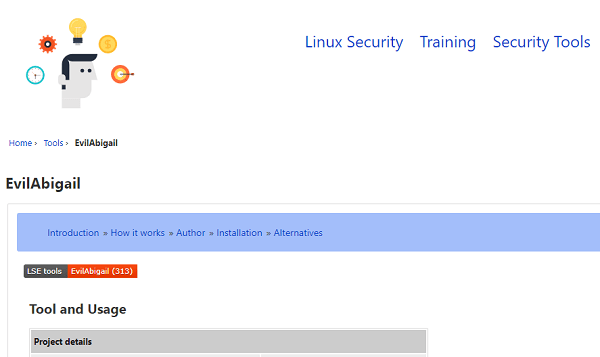
Social engineering is manipulating people to provide their confidential information. Different types of social engineering exist, and the data these hackers or criminals seek can vary.
These may trick their targets into providing information such as passwords and bank information or can use malicious software to be installed on the computer and steal it.
Criminals use social engineering on social media because a human exploits them, so they can easily fool them into giving confidential information. This is easier than hacking the password.
Types of Social Engineering Attacks
Social engineering strategies exploit human nature. The elements of human nature used are the nature of humans to help others, fear of making errors, desire to avoid struggles, etc. To understand social engineering or to prevent it, one must understand the activities of the hackers. Here are the types of social engineering attacks.
Electronic Approach
This is the most common approach hackers use to gain confidential information access. Attackers gather information about targets via search engines. Phishing or baiting are some attacks that fall under this category.
Phishing:
This is the most common social engineering technique. Email, social media, and messaging trick victims into providing sensitive information. The common characteristics of phishing are messages to attract users’ attention.
- They send messages to stimulate the victims’ curiosity and make them visit a specific website; they might use letters with a sense of urgency, disclose sensitive data to resolve the situation, use a shortened URL or link to redirect the victims to malicious domains, etc.
- They may even use email messages and forged sender addresses to believe the email is from a trusted source.
- Phishing social engineering attacks can be avoided by deploying SPAM filters, installing updated antivirus, or creating security policies.
- Encrypting all the sensitive details of the organization is necessary. Employees must be trained with mock phishing attacks.
Baiting:
This is another type of phishing attack. In this method, attackers promise to trick victims with promising items or services. To avoid this, one must never open attachments or emails that are received from unknown sources.
Do not get tempted by free offers. The antivirus or anti-malware software of the computers must always be kept updated.
Physical Access Approach
The attackers use some physical activity to collect victims’ information. The report can be personal details such as birth, social security number, mobile numbers, or passwords. Types of attacks under this approach are pretexting, tailgating, and quid pro quo.
Pretexting
The attackers try to gain the victims’ trust with a new identity. After gaining confidence, they access the targets’ departments and information systems. To avoid this, organizations must train their employees regarding threats. Safe harbor must be offered to the subordinates; it is also important to rely on trusted sources only.
Tailgating
This is another social engineering attack that falls under the natural approach. The attackers follow the employee who has authorized access to the controlled area to control it.
Electronic turnstiles, man traps, photo beam detection, intelligent video, electrified hardware card readers, and other hardware solutions must be implemented to avoid tailgating.
Quid Pro Quo
In this type of attack, attackers promise to provide benefits to the victims in return for vital information such as access details they provide. To avoid quid pro quo, sensitive data must be safeguarded with security measures.
Care must be taken never to reveal sensitive details, use only the official phone number of the companies, and not converse with any employee of the organization.
Social Approach
This is another type of social engineering attack in which the hackers rely on social-psychological strategies to fool the target. This is a combination of a natural approach and an electronic approach.
In this, the attackers might create fake accounts from the details gathered from social media sites. Social approach attacks can be prevented by avoiding sharing personal information with anyone unknown online. This information includes the name, date of birth, hometown, graduation dates, school location, etc.
Reverse Social Engineering
In this method of social engineering attacks, the victim’s curiosity is enhanced and is made to initiate contact. Employees’ awareness of social-employee attacks must be improved to avoid this type of attack. Do not allow employees to install any external social media programs.
How to Avoid Becoming a Victim of Social Engineering Attacks on Social Media
Social engineering attacks can destroy the reputation and data of individuals or organizations. The attackers use these attacks to gain company details quickly.
- Spammers want the victims to act first and think later. Do not let the urgency influence you.
- Be suspicious of unsolicited messages.
- Research the facts before acting.
- Do not respond to requests for financial information or passwords. It could be a scam.
- Do not respond to requests for help from organizations.
- Legitimate companies do not contact anyone for help. Ignore all the requests from charity organizations and delete their applications.
- Do not click on the links that come in suspicious emails. If you want to visit a website, use search engines.
- Do not click on the download option until you know the sender personally. Set the spam filters high.
Social Engineering tools
KaliLinux:
This is one of the best social engineering tools that can be used to find social engineering attacks and website attacks.

The open-source tools it offers help to concentrate on safeguarding company security.
Maltego:
This tool is one of the top social engineering tools that can be used to reduce cyber risks.

Armitage:
It is merely a graphical cyber attack management tool that helps to visualize the targets and expose the framework with advanced capabilities.
Katana v2:
It is a versatile boot portable security suite that finds the top security distributions and applications to execute the single flash drive.
Unicorn:
It is the only tool to use the PowerShell downgrade attack that injects the shell code into the memory directly.
EvilAbigail:
The Python-based tool enables you to execute automated Evil Maid attacks, especially on Linux systems.

Beef:
It is one of the best social engineering tool kits for pen testers, providing the best practical click-side cyber attack vectors.
Honeyd:
The most engaging social engineering tool stimulates the virtual network, especially monitoring the attacker.
Ninja Phishing Framework:
This tool is only meant for phishing, and social engineers can use this tool, especially in phishing attacks.

Conclusion
Beware of social media hackers while accessing all social media platforms with your data. Nowadays, it’s the most common issue occurring mainly on trending or not trending social media sites. It may not happen with trending social media platforms, but third-party hackers might grab your data.
Please email us at info@dotndot.com or call us at +919848321284.



